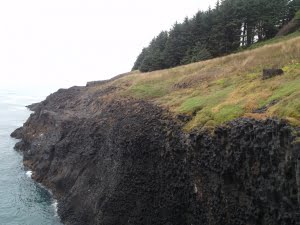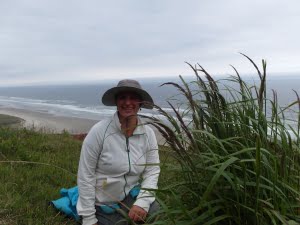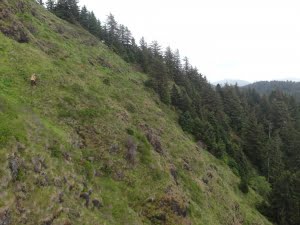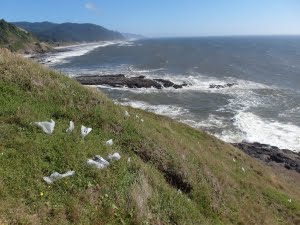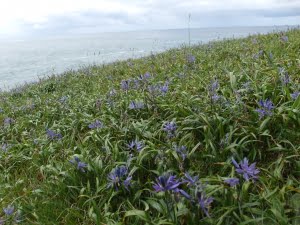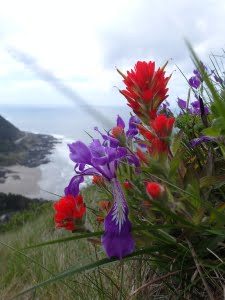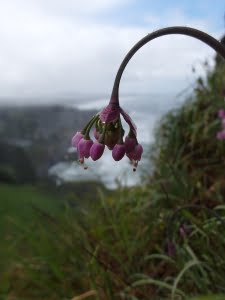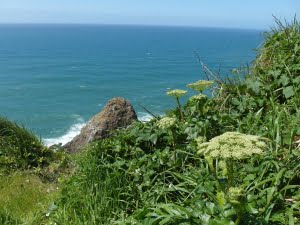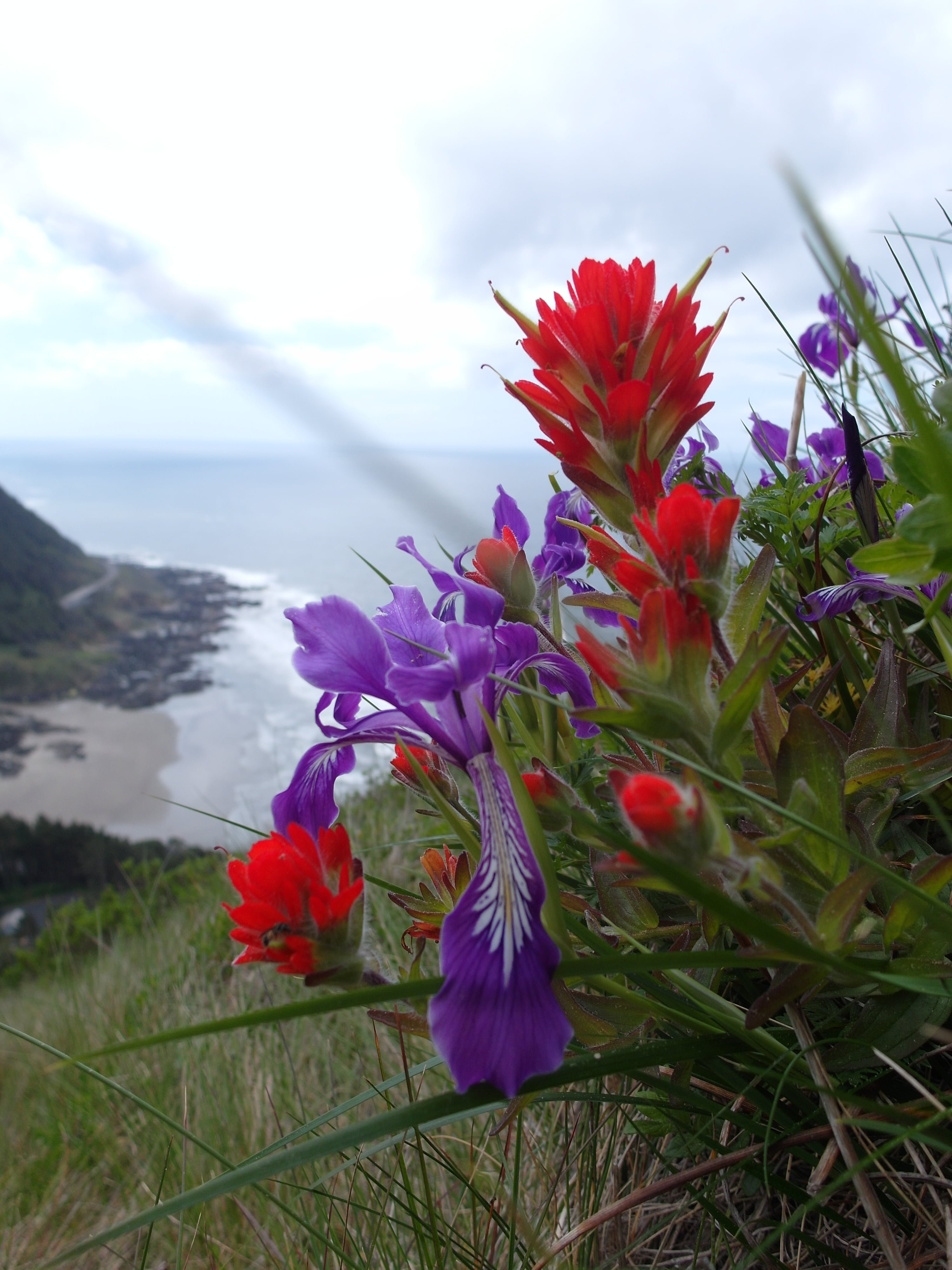
Seed Collection in Oregon’s Remaining Coastal Prairies
Starting in 2015, IAE was awarded an opportunity to engage in collecting seed of a diversity of plant species from remnant prairies on the Central Oregon Coast. The project will support ongoing restoration efforts for the Oregon silverspot butterfly (OSB) at Nestucca Bay National Wildlife Refuge near Pacific City, and will benefit other restoration sites by providing an increased diversity of native plant species for restoration.
OSB is a threatened species endemic to coastal prairie habitats. Today, the species is isolated to only a handful of populations. Until this project, seed was available for restoration, but only from a limited suite of native plants. A greater diversity of plant species will increase the effectiveness of the restoration, promoting more resilient habitats that support a greater diversity of pollinators and other wildlife.
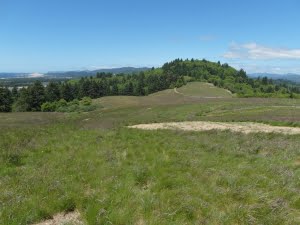
Nestucca Bay National Wildlife Refuge, the site of a large-scale restoration project to create habitat for the Oregon silverspot butterfly.
An Oregon silverspot butterfly nectaring on goldenrod (photo credit: Mike Patterson).
From Tillamook to Florence, about 40 remnant prairie seed collection sites were identified by assessing aerial photographs, talking with partners, drive-by-botany, and hiking in natural areas throughout the region. This project took us to some of the wildest and most beautiful locations on the Central Oregon Coast. Particular focus was placed on seeking seed of plant species whose growth habits would provide specific advantages in the restoration process. In particular, we sought plants who play well with the plant species used as the exclusive food source by OSB caterpillars, the early-blue violet (Viola adunca). We also sought seed of native annual forbs, which are particularly useful in grassland restoration as they germinate and establish quickly, filling space effectively in the initial years of a restoration project and competing with introduced species until slower-growing native perennials can become established. Other niches we hoped to fill with more diverse seed collection where those of native perennial forbs, grasses, and sedges.
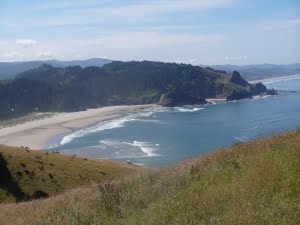
From Cascade Head, looking across the mouth of the Salmon River toward the Westwind Headland and The Thumb. Roosevelt elk can be seen on the left.
Ian scouting for seed in one of the very steep prairies at the tip of Cape Lookout.
A narrow strip of prairie habitat above basalt outcrops near Otter Crest.
Ashley and her good buddy Pacific reedgrass (Calamagrostis nutkaensis) at a meadow near Rock Creek.
Guy scouting the steep prairie at Cape Perpetua.
Seed collection bags on American bird’s foot trefoil (Acmispon americanus) on a small headland at Bob Creek.
In all, seed of nearly 40 species was collected. Some noteworthy species included small flowered lotus (Acmispon parviflorus), seaside paintbrush (Castilleja littoralis), Oregon iris (Iris tenax), farewell-to-spring (Clarkia amoena ssp. caurina), nodding onion (Allium cernuum), sea watch (Angelica lucida), streambank lupine (Lupinus rivularis), California bee plant (Scrophularia californica), shortspur seablush (Plectritis brachystemon), bristlystem checkermallow (Sidalcea hirtipes), and many others.
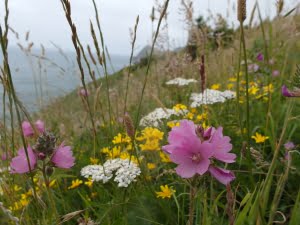
Bristlystem checkermallow (Sidalcea hirtipes), common yarrow (Achillea millefolium), and Oregon sunshine (Eriophyllum lanatum) dot prairie at the Westwind Headland. The Pinnacle at Cascade Head is visible as a blurry lump in the background.
Common camas (Camassia quamash ssp. maxima) near Otter Crest. All populations of this species found on the Oregon Coast are much shorter than their Willamette Valley counterparts.
Oregon iris (Iris tenax) and Oregon Coast paintbrush (Castilleja litoralis) at Cape Perpetua.
Nodding onion (Allium cernuum) at Cape Foulweather
Sea watch (Angelica lucida) at Heceta Head.
Shortspur seablush (Plectritis brachystemon) at Cape Perpetua.
Depending on the species, seed will either be sown directly at Nestucca Bay National Wildlife Refuge, grown as plugs for transplanting to the restoration site, or grown in an agricultural setting to increase the quantity of seed available for direct seeding. The refuge is open for public visitation and the prairie restoration area can be accessed via the Pacific View Trail. Come on out and check on the progress!


